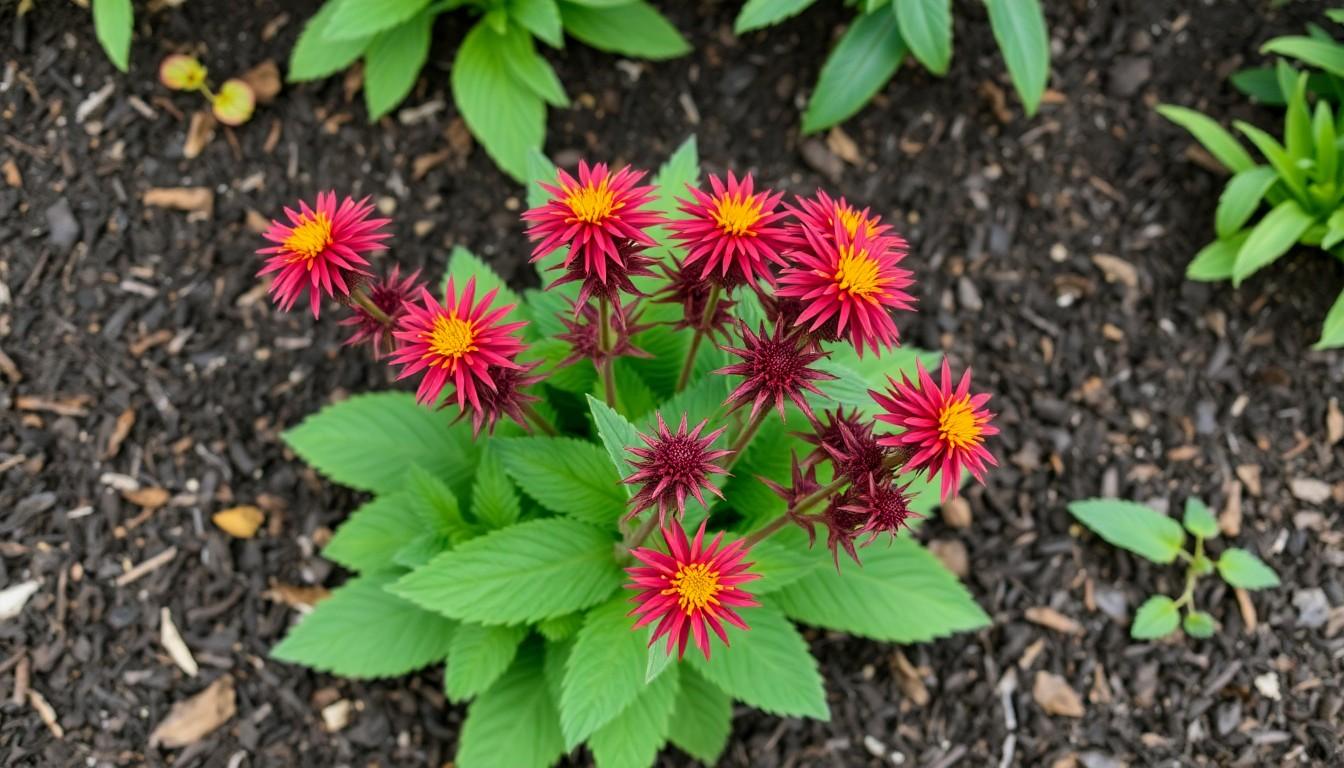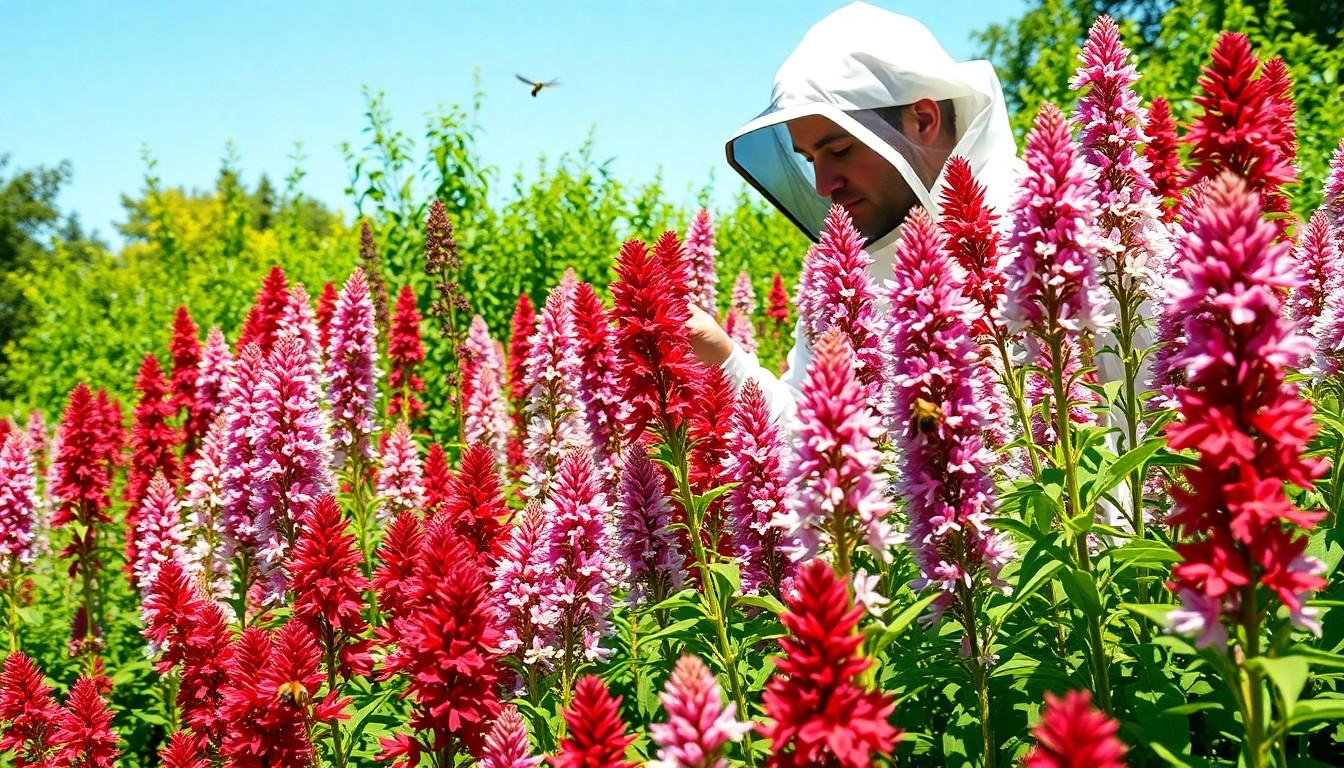If you’ve ever been tempted to turn your garden into a buzzing paradise, the Monarda plant might just be your ticket to floral fame. Known for its vibrant blooms and aromatic leaves, this beauty isn’t just a pretty face; it’s a bee magnet and a culinary delight. Imagine sipping tea made from your own garden while bees dance around in a floral frenzy. Sounds dreamy, right?
Understanding Monarda Plant
Monarda, also known as bee balm, captivates with its striking blooms and fragrant foliage. This perennial herb thrives in various environments, attracting pollinators while offering culinary advantages.
Common Types of Monarda
Several types of Monarda exist, each with unique characteristics. Monarda didyma, or crimson bee balm, features bright red flowers and attracts hummingbirds. Monarda fistulosa, commonly called wild bergamot, offers lavender blooms and a subtle aroma. Monarda bradburiana, known as eastern bee balm, produces delicate pale pink flowers. Gardeners often choose these varieties to create thriving, colorful displays in their landscapes.
Benefits of Growing Monarda
Growing Monarda introduces numerous benefits to gardens. This plant serves as a natural pollinator attractor, enhancing biodiversity. Its leaves not only provide a pleasant scent but also lend themselves well to herbal teas. Monarda boasts medicinal properties, including anti-inflammatory and antibacterial effects. Additionally, it thrives in poor soils, making it an excellent choice for sustainable gardening practices.
Essential Monarda Plant Care

Monarda plants thrive with proper attention to their care requirements. Focus on soil and watering practices to enhance growth and vitality.
Soil Requirements
Monarda prefers well-drained, moist soil enriched with organic matter. Soil pH should range from 6.0 to 7.0 for optimal health. Adding compost or aged manure can significantly enhance soil fertility. Sandy loam complements Monarda well, allowing for good drainage while retaining necessary moisture. Avoid overly compacted soils, as these hinder root development and promote rot.
Watering Guidelines
Consistent moisture supports Monarda’s growth, especially during dry spells. Watering should occur at least once a week, with adjustments made in hotter months. Soil should remain damp, but never saturated, to prevent root rot. Use mulch to retain soil moisture and improve temperature regulation. Pay attention to rainfall; reduce additional watering during wet periods to avoid waterlogging.
Sunlight and Temperature Preferences
Monarda plants thrive under specific sunlight and temperature conditions. They prefer full sun to partial shade, benefiting from at least six hours of direct sunlight daily. Adequate light ensures vibrant blooms and healthy foliage.
Ideal Growing Conditions
Warm summer temperatures ranging from 70°F to 80°F promote optimal growth. Monarda tolerates cooler climates down to 30°F, demonstrating resilience. Providing protection from harsh wind helps prevent damage. It’s critical to ensure good air circulation around plants, minimizing the risk of diseases.
Seasonal Care Tips
During spring, monitor the temperature for frost risks, covering plants if needed. In summer, consider daily watering to maintain moisture levels, particularly during dry spells. Autumn cleanup involves cutting back spent flowers and dead foliage. With winter approaches, applying a layer of mulch protects roots from freezing temperatures. Regular attention to these seasonal changes enhances the health and longevity of Monarda plants.
Pest and Disease Management
Monitoring Monarda plants for pests and diseases ensures their vibrant health and growth. Recognizing issues early enhances the effectiveness of treatments.
Common Pests to Watch For
Aphids often invade Monarda, sucking sap from the leaves. Spider mites may thrive in dry conditions, leading to webbing and stippling on foliage. Hummingbird moths can also pose a risk, damaging blooms, while slugs and snails feast on tender leaves. Regular inspections can help detect these pests before they cause significant harm.
Preventative Measures and Treatments
Implementing preventative measures aids in keeping Monarda plants healthy. Introduce beneficial insects, like ladybugs, which naturally control aphid populations. Apply insecticidal soap for immediate relief from infestations. Maintaining proper moisture levels discourages spider mites, while diligent garden cleanup minimizes hiding spots for slugs. Regularly rotating plants can also help reduce pest prevalence over time.
Pruning and Maintenance Tips
Pruning and maintenance play crucial roles in ensuring the health of Monarda plants. Proper techniques enhance growth and flowering while preventing disease.
When and How to Prune
Pruning occurs in late spring or early summer, just as the new growth appears. This timing promotes strong bushy growth and abundant blooms. Cutting back dead or spent flowers encourages continuous flowering and prevents the plant from becoming leggy. Remove approximately one-third of the stems to maintain shape and airflow. Always use clean, sharp tools to minimize stress on the plant and limit disease transmission. Regularly inspect for any damaged or diseased stems and remove them promptly to promote overall health.
Fertilization Recommendations
Fertilizing Monarda supports vibrant growth and blooming. Applying a balanced fertilizer in early spring encourages healthy foliage development. Organic options like compost or well-rotted manure enrich the soil while promoting beneficial microorganisms. It’s essential to follow the manufacturer’s guidelines to avoid over-fertilization, which can damage roots. Throughout the growing season, monitor plant health; additional feedings may be necessary if leaf color appears pale or growth seems stunted. Regular fertilization paired with proper watering maintains the vitality of these resilient plants.
Conclusion
Caring for Monarda plants offers gardeners a rewarding experience filled with vibrant colors and delightful scents. By providing the right soil moisture and sunlight conditions, these resilient plants thrive and attract a variety of pollinators. Regular monitoring for pests and diseases ensures their health and longevity, while proper pruning and fertilization enhance growth and blooming potential.
With its culinary uses and ecological benefits, Monarda stands out as a valuable addition to any garden. Embracing the care tips outlined will not only yield beautiful blooms but also create a sustainable and inviting environment for bees and other beneficial insects. Cultivating Monarda is a step toward enriching both gardens and local ecosystems.

